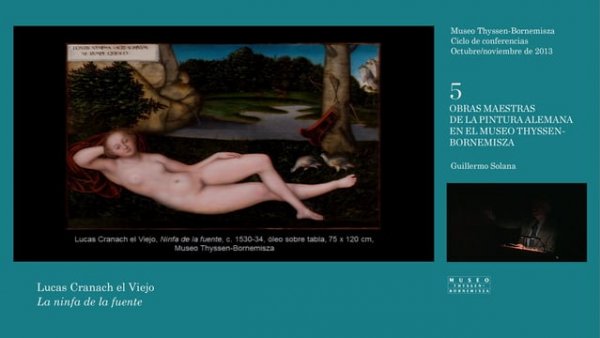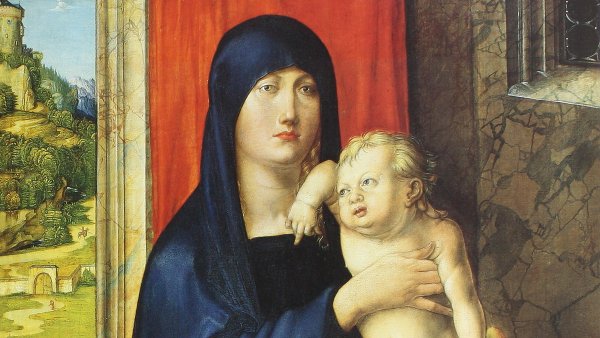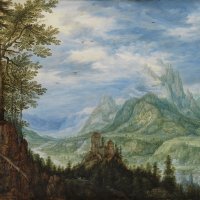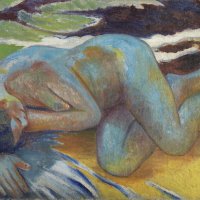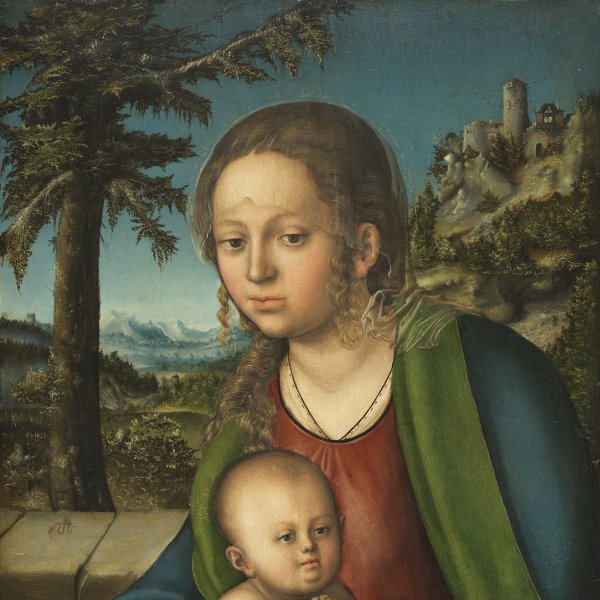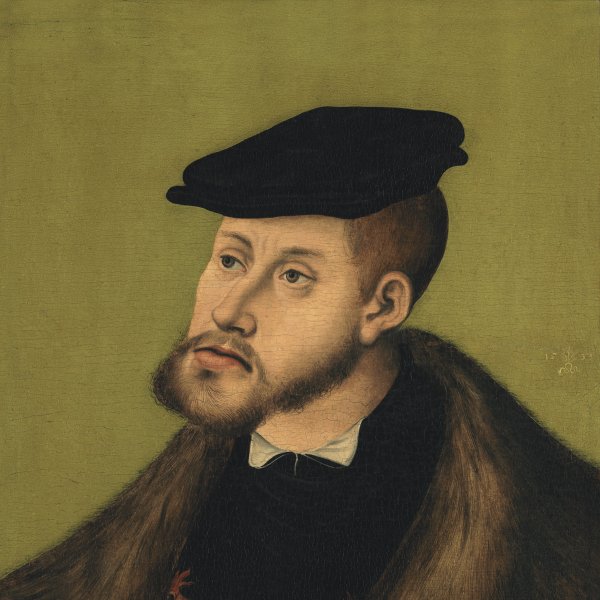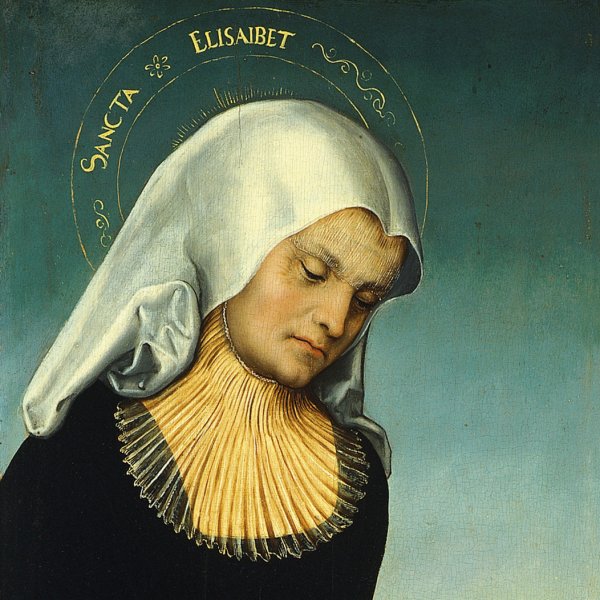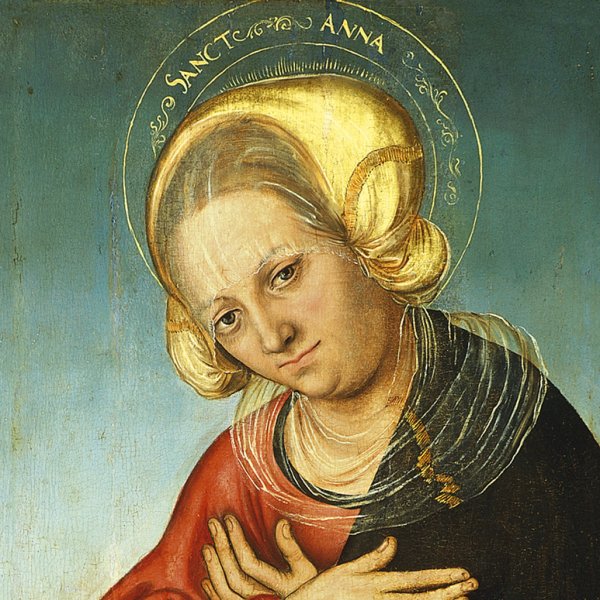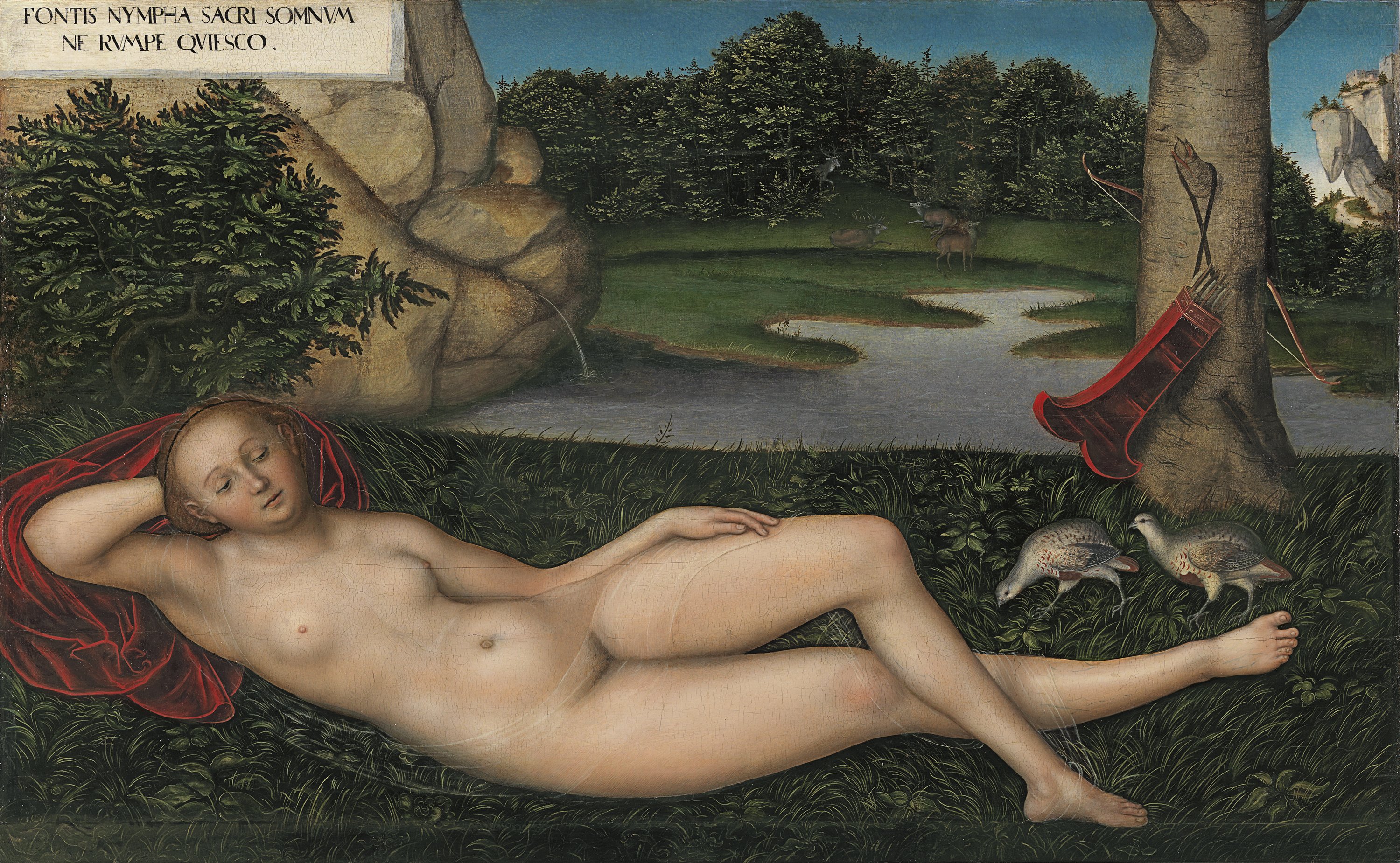The Nymph at the Fountain
Together with Albrecht Dürer, Lucas Cranach was among the most important 16th-century German painters. His oeuvre includes religious compositions as well as portraits and mythological works. In the latter the female nudes depart from Italian canons of proportion and constitute a quintessentially German prototype of notable sensuality. The present panel depicts the nymph of the Castalian spring, whose water was drunk by philosophers and poets in search of inspiration. The nymph lies on a thick grassy bank in an unnatural pose, her head leaning on her right arm, her body turned towards the viewer and her left leg crossed over. Behind her, a succession of receding planes create a sense of depth. The subject of the composition combines references to classical antiquity with the influence of Italian art. The nymph’s pose recalls that of Giorgione’s Venus in the Dresden Gemäldegalerie, while Titian’s Venuses are suggested in the presence of the cartouche at the upper left corner that bears the text of a Latin poem. The quiver with arrows and the bow resting against the tree may refer to Diana the Huntress or to Cupid, who traditionally accompanies Venus.
NH
The dimensions of this outstanding painting are not the original ones as it has been modified on all four sides. In addition, a strip around 4 cm wide was added to the lower edge below the figure’s foot. The subject, as with others in Cranach’s oeuvre, was re-used on various occasions by the painter with changes to the figure and setting. In this predominantly horizontal composition the artist located the nymph covered in a transparent veil that covers her head and body. She rests peacefully beside a fountain in a rather unnatural pose, her head raised slightly due to the position of her right arm and the velvet cushion, turning her body towards the viewer and crossing one leg. Further horizontal lines are created further into the pictorial space by the different elements that construct the landscape and which emphasise the peaceful, gentle mood of the painting. These planes correspond to the edge of the thick grass on which the nymph is lying, the soft outlines of the hills with deer at rest, and finally the screen of trees with which the composition is closed at the rear.
The subject of the painting has been of interest to scholars due to its combination of classical and Italian references. One of the keys to the identification of the nymph, whose posture recalls Giorgione’s Venus in the Gemäldegalerie in Dresden as well as Titian’s, is to be found in the cartouche in the upper left corner painted on the rocky outcrop from which the fountain’s source springs in the manner of an inscription. The text is a Latin hexameter that has been identified as the start of an epigram by the humanist Giovanni Campani. The nymph has thus been identified as the nymph of the Castalian Spring, from whose waters poets and philosophers drank in search of inspiration. Cranach introduced two further elements into the scene: the quiver and arrows and the bow that hang from the tree trunk whose verticality breaks the calm horizontality of the composition. These two objects, together with the deer in the background, may refer to Diana the Huntress or to Cupid who usually accompanies Venus. In this work Cranach imbues his nymph with a sensual charge that is immediately evident to the viewer despite the harmony and peace that envelop the figure. Lübbeke dated the panel to around 1530–34 on the basis of the figure’s elongated proportions that recall Mannerist art.
Mar Borobia
Emotions through art
This artwork is part of a study we conducted to analyze people's emotional responses when observing 125 pieces from the museum.

